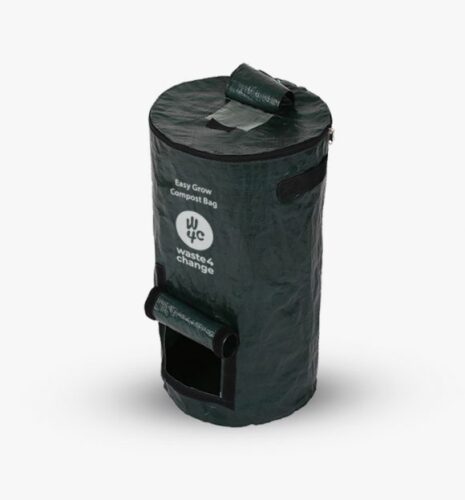Food Preservation: What Did People Do With Leftovers Before There Were Fridge and Microwaves?
As one of the largest Muslim population country, Indonesia has a tradition to serve various platter during Eid Fitr. Among all the delight, joy, and banquet, we tend to forget the aftermath: leftovers. Since every family member is already full, we usually serve up rendang and opor too many to be consumed in one sitting. Oh well we can save it up for later, just put into the fridge. But everyone would rather eat them while they’re still hot! Just heat them up in the microwave.
Ever since domestic refrigerators and microwaves were invented, leftovers have become a product of modernity. Until refrigerators became standard in many homes in the 20th century, there was no such thing as “leftovers”. Preserving food was as much part of the culinary process as the preparation. Whether it’s salted herring, smoked meat, or pickled berries. Nowadays we have a fridge, no need to worry about spoilage when we’re saving last night’s dinner.
Leftovers Before It Was Cool

According to Time, in the prehistoric ages ancient man realized the fruits of a hunt would stay edible for a while if they were stored at the back of a cold, dark cave. At that time, they know that low temperature prolongs the age of food. Ancient Greeks and Romans hauled ice and snow down the mountains, wrapped it in straw or buried it in cellars where it slowed down food spoilage, although “leftovers” back then were more along the lines of fall harvest foods that could be stored and eaten when sustenance was scarce.



People who lived during the Middle Ages (6th to 15th century) identify food as their currency. Taxes, tributes, and paychecks were usually paid in the form of bread or boiled potatoes. The aristocrats might give their remains of large meals to the peasants. In poorer households, soups or porridge might be made in a large batch and kept in a pot constantly on a simmer for several days or left to go cold for a while and then brought back up to cooking temperature the next day. During that time, most people grew their own food, so what’s served on the table today must be finished today too. If there’s some leftover, it would be fed to pigs.



At the end of the 17th century, it was found that mixing sodium nitrate with water gives a cooling effect. In the northern part of the world where lakes and rivers freeze during winter, ice was harvested from where they naturally formed. Using that method and harvested ice, an icebox was invented. Before there was an electric refrigerator, iceboxes were referred to the public as “refrigerators”. Only after the invention of the modern day electric refrigerator did the early non-electric refrigerators become known as an icebox. During this time, having leftover food and an icebox to save them are symbols of wealth.



Then, the World War I crisis which started in 1912 forced US citizens to preserve food. The United States Food Administration (now FDA — Food and Drug Administration), created in 1917 and headed by Herbert Hoover, campaigned to convince Americans to voluntarily change their eating habits in order to have enough food to feed the military and starving civilians in Europe. The Administration advocated using honey to substitute sugar and corn as alternatives to wheat. Because of the scarcity of food, most citizens in the world did not understand the concept of leftovers. According to The Atlantic, others argued that it was immoral to keep house pets because they ate foods that could be given to other people. At the time, American dogs and cats lived mainly on human food that were past its prime condition, such as stale bread and souring milk. In wartime, some Americans actually killed their pets rather than continue feeding them leftovers, and newspapers across the country celebrated them as patriots.



After the war crisis, plastic innovators saw the opportunity to invent containers that would seal in food and keep refrigerators to smell fresh. New Hampshire native Earl S. Tupper launched Tupperware in the 1940s, and Tupperware was a roaring success. For those who didn’t want to purchase an entire line of plastic containers, Dow Chemical started selling Saran Wrap in 1953, and Ziploc storage bags in 1968. Not long after, in the 1970s, household microwaves were started to produce en masse. By 1986, a quarter of American homes were outfitted with microwaves capable of reheating leftovers in seconds. The appliance is now owned in more than 90% of U.S. households.
Still, even though now we have various options on how to preserve our food, it’s better to not leave any leftovers at all. If we still have leftovers, follow the steps to not send our waste to landfill. Also find out here about the difference of food waste and food loss, so that we could reduce our food waste.
Waste4Change Composting Tools



We finish our plate. We don’t waste any food left. But what should we do about our kitchen scraps? Try composting! It’s easy, can be done at home, and there are various ways to do composting. Waste4Change also provides a composting bag to help you learn composting at home. The package includes user instructions, so that you can easily handle your organic waste and contribute in reducing landfill waste.
Source:
https://time.com/3957492/a-brief-history-of-leftovers/
https://www.phoenixnewtimes.com/restaurants/phoenix-food-new-table-scraps-legacy-leftovers-save-the-planet-11312369
https://www.history.com/news/the-curious-history-of-leftovers
https://www.theatlantic.com/business/archive/2015/10/an-economic-history-of-leftovers/409255/
https://togetherwewin.librarycompany.org/food-conservation-during-wwi-post/
https://www.idntimes.com/science/discovery/bayu/makanan-sisa-yang-berguna/7
http://www.clever-storage.com/food-storage/the-changing-face-of-storage/from-middle-ages-to-modern-era.html#.X4aDuu1S9PY
https://nchfp.uga.edu/publications/nchfp/factsheets/food_pres_hist.html
https://americanhistory.si.edu/object-project/refrigerators/leftover-dishes
Havard, Lucy J. “’Preserve or Perish”: Food Preservation Practices in the Early Modern Kitchen.” Notes and Records, vol. 74, no. 1, 2019, pp. 1-29. https://doi.org/10.1098/rsnr.2019.0004. Accessed 14 October 2020.



